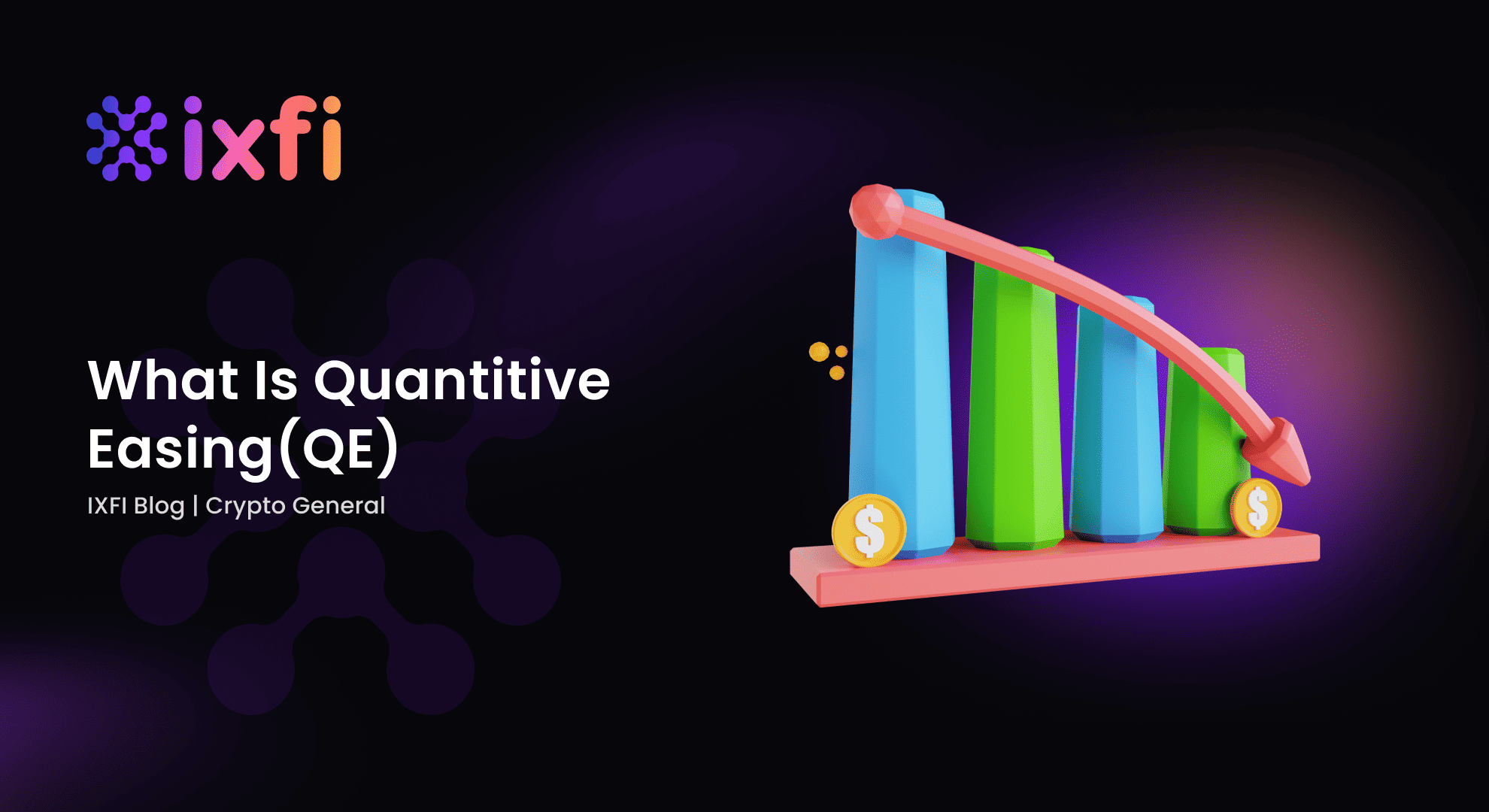Quantitative Easing is one method that states can use to correct or at least temporarily control periods of economic decline. Economic cycles go through various stages, from expansions and peaks to contractions and lows. The overall global economic state is influenced by events that occur worldwide, whether they are geopolitical or financial in nature, such as armed conflicts, changes in GDP in developed countries, fluctuations in credit interest rates, and the general expenses of the population.
What is Quantitative Easing?
Quantitative easing is a less conventional type of monetary policy, where central banks have the power to purchase securities from the open market to increase the money supply. Credit and investments are encouraged for the market to grow by simulating a larger money supply. Quantitative Easing has all sorts of advantages for the local economy but is also criticized by experts for the results it can have on financial markets. This policy expands the central bank’s balance sheet in that country when normal market operations are no longer effective. When borrowing is no longer profitable, the central bank creates new reserves and liquidity in the market for commercial banks.
How does Quantitative Easing work?
Central banks purchase government bonds and other state-value titles, increasing the money supply for those deficit expenses to be financed in an economic crisis or when other policies no longer work, depending on the situations and economic cycles we find ourselves. When times are troubled, unstable, and inflationary, banks increase interest rates very much to try to control inflation – only this measure can lead to an increase in unemployment and the beginning of a crisis because it becomes more difficult for companies or businesses to borrow to maintain a more operational cash flow. This is where Quantitative Easing comes in, as it reduces these interest rates and makes life easier for businesses and employees because more credit is generated.
What problems led to the existence of Quantitative Easing?
Economic cycles are very closely linked, and financial regulations are complicated because all actions’ effects must be considered, especially in difficult times. When inflation increases significantly and the state tries to control it, deflation can occur, where prices decrease but so do interest and salaries, people are laid off, and companies go bankrupt. Often, inflation is tried to be stimulated to control a potential deflation that may occur, but this also decreases purchasing power and the overall economy of a country. In 2001-2006 Japan initiated some Quantitative Easing measures, followed by the US in 2009 and 2020.
What are the disadvantages of Quantitative Easing?
Like any other economic measure, it can have unexpected effects and worsen poorly controlled problems. Firstly, it can increase the risk of inflation and hyperinflation. This is the result we see now, after the Covid-19 pandemic, where money has been printed excessively out of nothing, hoping to stop a potential recession. As a result, resources become increasingly expensive to buy, the power of money decreases, and countries with their currency, such as Romania or Turkey, are more severely impacted than the Eurozone. However, even in the Euro or Dollar, we see significant increases, which leads to even greater differences between classes. This is not always the case, but it represents a risk.
It is also believed that it can cause asset bubbles, having an impact that benefits the most prosperous and wealthy while lower layers feel the most substantial results. Suppose Quantitative Easing initiates an explosion in financial markets. In that case, it will attract even more inexperienced people hoping to become rich overnight, when it often shows the peak of a market that will fall soon.
The Quantitative Easing measures taken by the US between 2009-2015 stopped the financial crisis from deepening further, reducing interest rates and stimulating markets. At the same time, it did not undeniably impact the population. Similarly, it is discussed that the Quantitative Easing measures taken at the beginning of the pandemic stopped the recession that would have followed the rules imposed against the spread of the virus or canceled it. Nonetheless, inflation is felt only now, and it is interesting to observe how everything develops.
Anyone can become an investor. Globally, cryptocurrencies represent an emerging asset class, with the number of investors growing continuously. Within the ixfi platform, we are building a crypto community where everyone is welcome. We mean it when anyone can be an investor: create an account on ixfi today and benefit from over 350 cryptocurrencies and exclusive rewards offered through monthly promotional campaigns.


